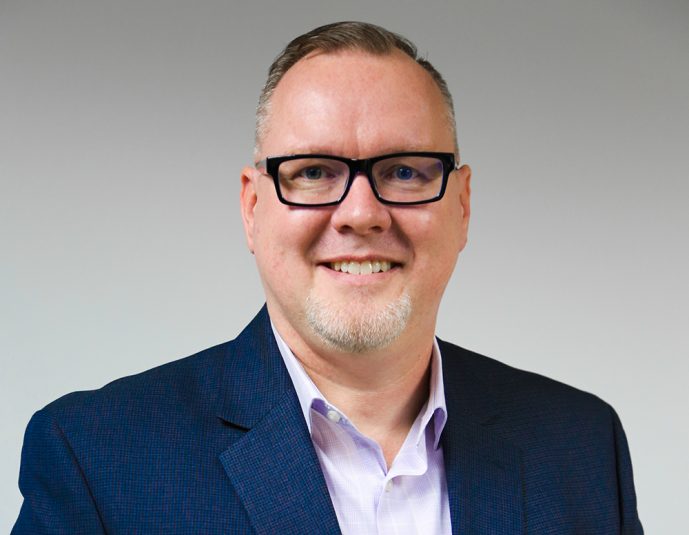SVG Sit-Down: Florical’s Shawn Maynard on How IP, Cloud Will Transform Channel Playout
The vendor’s VP/GM sees increased demand for integrated systems and streamlined workflow
Story Highlights
The world of channel playout platforms is evolving at an astonishing rate. Software-based systems have taken over the market, while the rise of IP and the move to the cloud promise to revolutionize how broadcasters deliver their channels. Many broadcasters are looking to move away from heavy-iron–based infrastructure in favor of virtualized-playout solutions. In addition, integrated–channel-playout (ICP) systems are integrating third-party software more than ever in an effort to serve customer demands for automation and a streamlined workflow.

Florical’s Shawn Maynard: “On the IP playout front, we are going to be in a hybrid [SDI and IP] mode for a while. There are still people that are going to have a coax plant mixed with IP where it makes sense for production flow.”
How do you see the transition to IP impacting Florical and its customers?
There is no question in my mind that IP is going to shift the game, so we have to be ready. We also have to realize where we are on the arc of IP technology. Right now, there is a lot of focus on SMPTE 2022-6 as the production IP workflow [standard]. But, within 2022-6, there is not a playout-to-air format, so there are some limitations. SMPTE recognizes that, which is why they’ve been working on the SMPTE 2110 standard. ST-2110 takes TRO3 as its basic infrastructure and builds upon that using PTP for clocking, AES as audio standard, and so on. So, there’s no way you can offer a comprehensive 2110 end-to-end solution right now, but you can you start that journey.
On the IP playout front, we are going to be in a hybrid [SDI and IP] mode for a while. There are still people that are going to have a coax plant mixed with IP where it makes sense for production flow.
Today, the industry is demanding integration of third-party products into channel-playout systems more than ever. How is Florical serving this demand?
Graphics is the big [third-party integration] that customers are asking for, because you are beholden to a certain graphics package and workflow within your facility and operating environment. Integrating [playout and graphics] I think makes a lot of sense because now your creative-services people can just let it flow all the way to the on-air [product].
Last year at NAB, we demonstrated [an integration between] Vizrt’s Viz Engine on our Acuitas playout platform. The next target we’re looking at is bringing Ross [Video’s] Xpression graphics engine on board, as well as Pixel Power and some others. That makes a lot of sense for us. We’re also looking for partners in areas like audio to come on board as well.
There are a lot of options in that software realm, which is a game-changer because, if I bring you a commodity product like an HP server, you can enhance it with software [as often as you like]. You no longer [have to make] five different iron-horse purpose-built products squeeze into one piece of hardware. That’s a huge cost saving, and now I’m operating in an environment that’s much more energy-efficient as well.
Florical has been focused on SOA (service-oriented architecture) since its very inception. All of our software has worked in modules, with an overlay communicating when a module should spin up or spin down. It’s extremely flexible, especially when you need to upgrade. We can do it at a modular level; I don’t have to upgrade your entire plant.
How do you see cloud-based and virtualized environments affecting playout automation in the coming years?
I think the business case [for cloud-based playout] is still proving itself out. Right now, we’re starting to enter the very early-adopter stage, where people are experimenting. I know Discovery [Communications] is going to be playing out a few channels straight from the public cloud. I think there’s going be a lot of people watching to see the lessons learned there and where it is practical.
Then, looking at the business side of it, is it more practical and cost-effective to shove everything out to the cloud and not house any inventory or equipment [onsite] and just manage it as a service? That’s still a question mark. If I were a broadcaster, my concern would be that I can’t control [the cloud provider’s] cost. I can sign a three- or five-year contract with them, but, after that contract is up, what am I going to do if they want to double the price? At that point, I have no infrastructure to shift. So that’s a big question mark. I think there’s much to learn, but people are dipping their toe in the water, and it’s very exciting.
What do you to expect to exhibit at NAB 2017?
We’re going to be showing our cloud playout solution in a virtualized environment. Whether you want to utilize a public cloud or a private cloud, this will be a virtualized solution. We’re going to be demonstrating that solution playing out via IP, whether it’s 2022-6 or ASPEN or any other [IP format] you prefer.
I also think, when people come to NAB, they’re looking for two things. The first is practical technology: what changes my business today and makes a drastic cost-saving impact? The second is future technology: where’s the industry going, and how can I future-proof myself? NAB, for the large part, has been controlled by iron manufacturers who make boxes from one NAB to the next. But, in the software world that we live in, we have a product umbrella, and, three months from now, that product could do 1,000 different things versus what we showed you at NAB. It’s a faster revolution model, and we believe that gives us an advantage.
